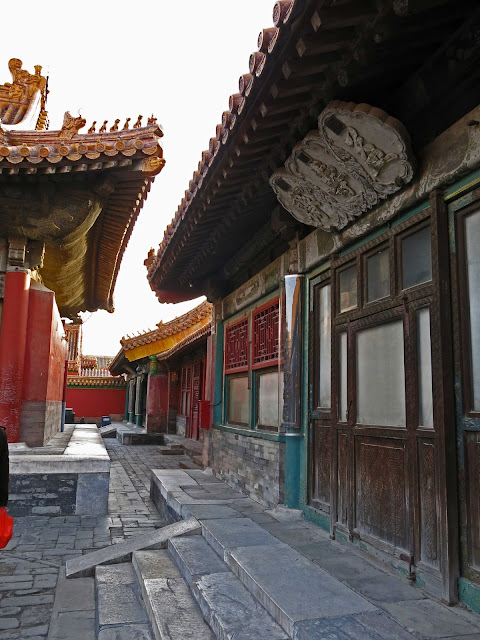This and the Great Wall would have to be the most well known of Chinese historic sites with Westerners and was our sole original reason for coming to Xian.
It turned out to be the gob-smacking attraction I had expected - if you ignore the vast array of vendors selling "souvenirs" that surround many such places in China and past whom you must negotiate to reach or exit ones destination - although I can think of plenty of places in the west that employ a similar tactic.
A word of warning - we went in December (off peak) but we have been told it is very difficult to see anything if you go in peak times, eg school holidays or worse still any public holiday. It was very cold perhaps just above zero but well worth that to not have the crowds.
Have look at the Wikipedia article here
Terracotta_Army (the introduction is reproduced below)
The Terracotta Army (Chinese: 兵马俑; literally: "Soldier-and-horse funerary statues") is a
collection of terracotta sculptures depicting the armies of Qin Shi Huang, the
first Emperor of China. It is a form of funerary art buried with the emperor in
210–209 BCE and whose purpose was to protect the emperor in his afterlife.
The figures, dating from approximately the
late third century BCE, were discovered in 1974 by local farmers in Lintong
District, Xi'an, Shaanxi province. The figures vary in height according to
their roles, with the tallest being the generals.
The figures include warriors,
chariots and horses. Estimates from 2007 were that the three pits containing
the Terracotta Army held more than 8,000 soldiers, 130 chariots with 520 horses
and 150 cavalry horses, the majority of which remained buried in the pits
nearby Qin Shi Huang's mausoleum.
Other terracotta non-military figures were
found in other pits, including officials, acrobats, strongmen and musicians.
Nothing mentally prepares you for the full scale of site(s) of the terracotta army or the sheer mammoth restoration being undertaken here.
These look impressive but the reality is that most are broken (as below)
There is a full time team piecing the soldiers and other figures back together - more than several lifetimes work.
Each soldier is unique and modelled, we were told, on an individual with facial features added to a number of "head moulds" .
The figures were originally painted ( as reproduced above) which must have presented a mind boggling sight, unfortunately just minutes in the air after excavation causes the paints to flake off.
Allow plenty of time there is a lot to see.





















































